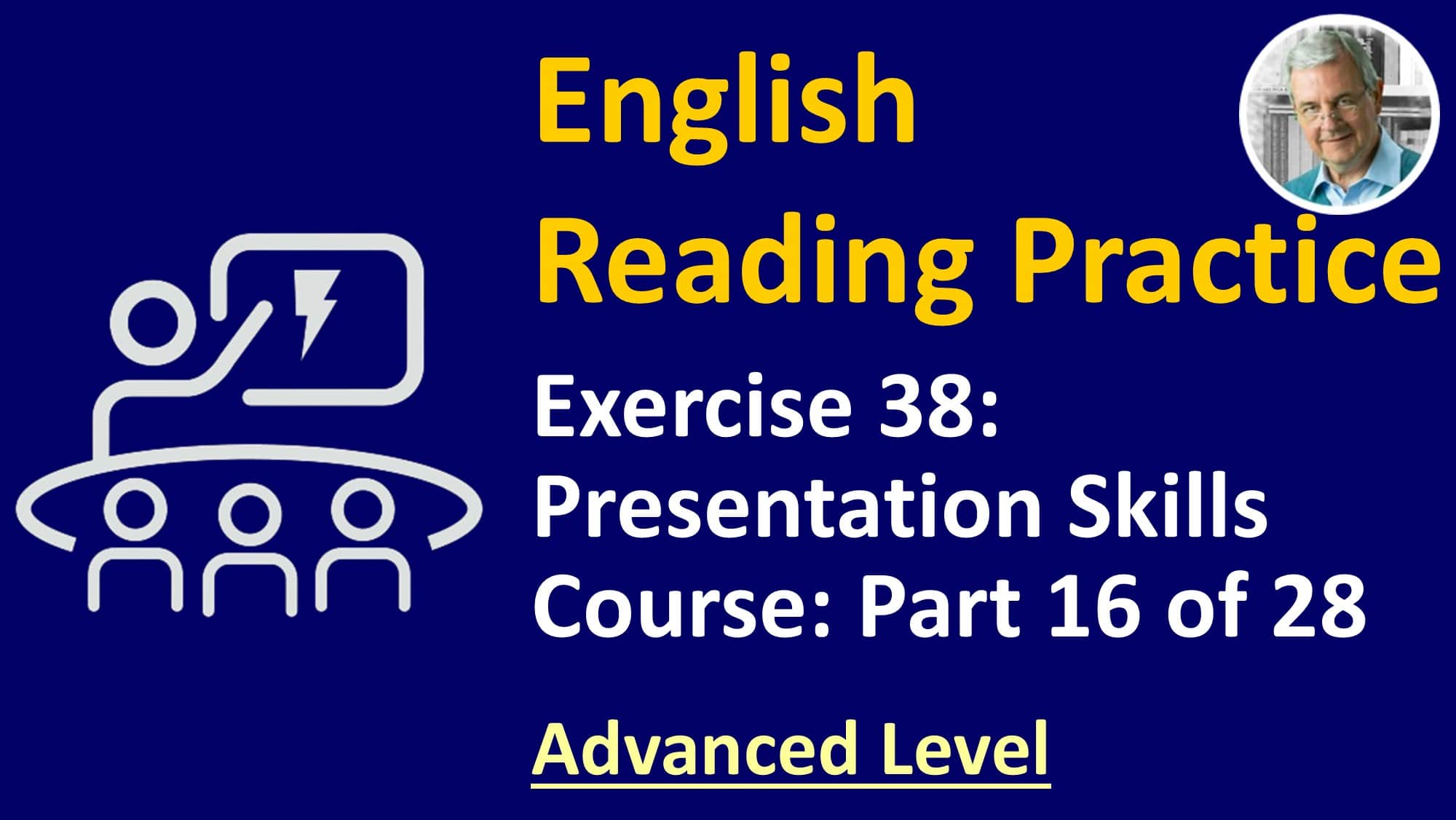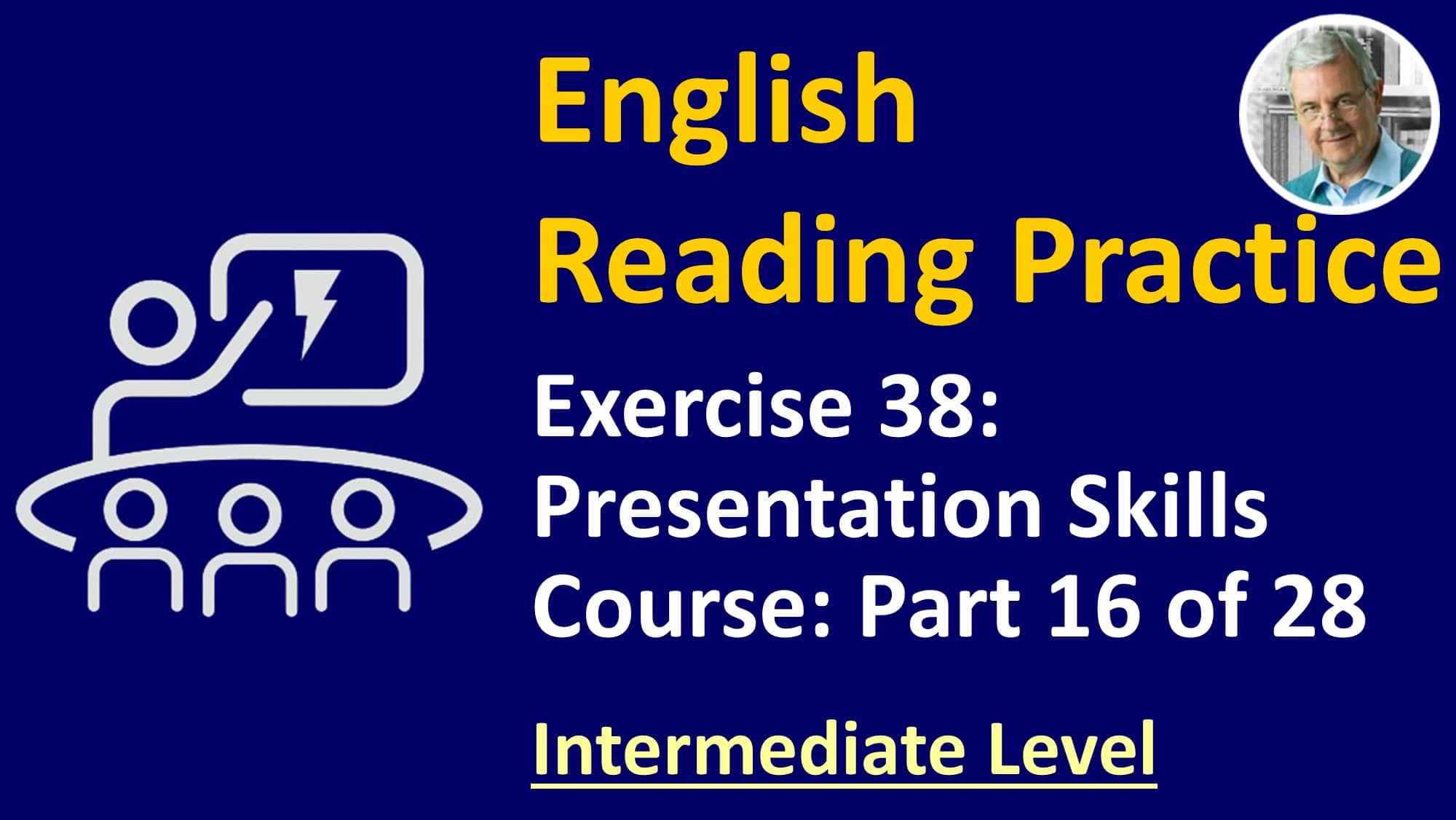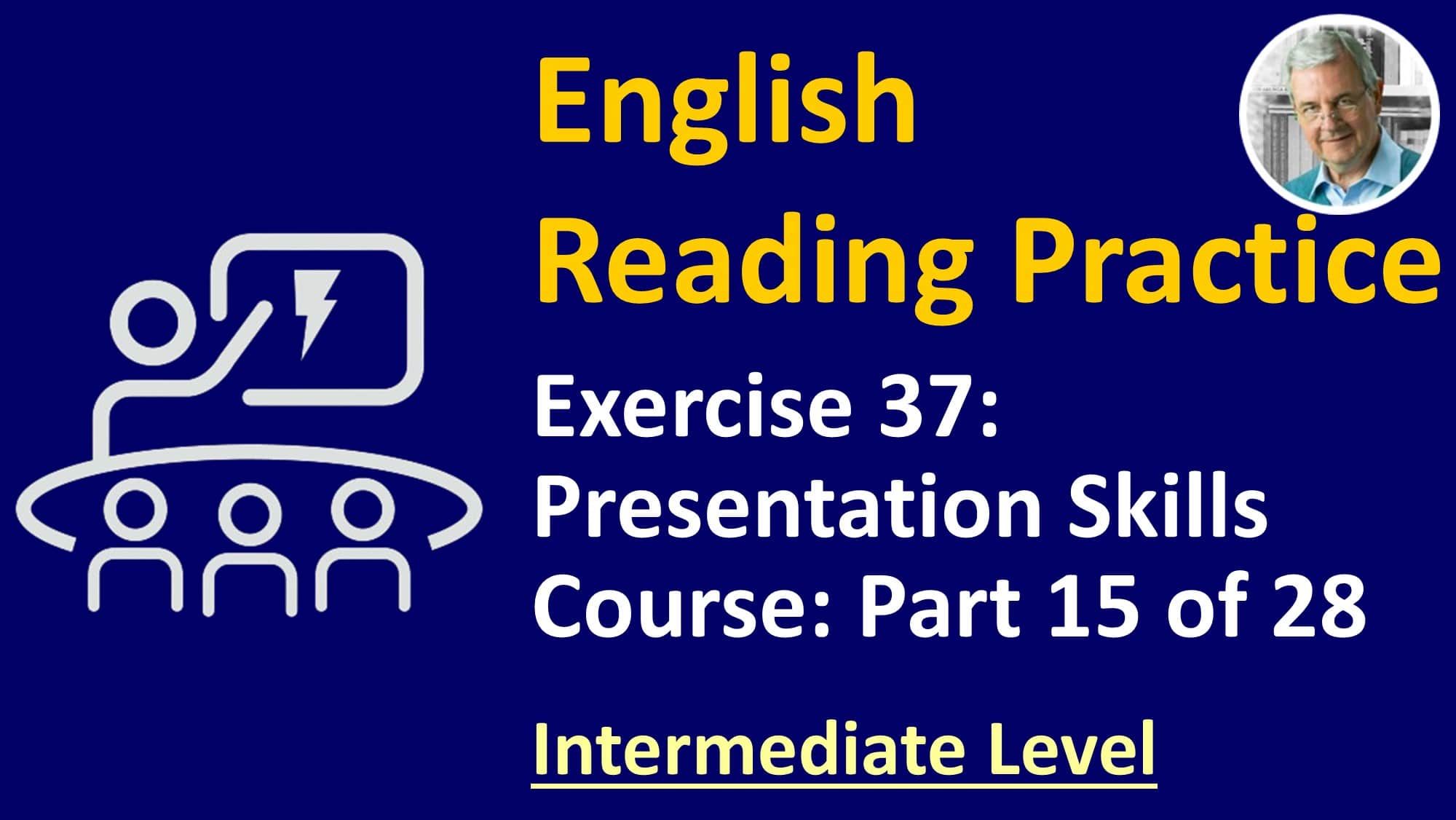ENGLISH Reading Exercise #13 (Advanced)
ENGLISH READING PRACTICE PLAYLIST – CLICK HERE:
To improve your English fluency and confidence when speaking, use the Synchronized Reading Method. Be sure to watch the Introduction video in the link above first, to understand the methodology. These English reading practice sessions will dramatically improve your English fluency.
These exercises are designed for intermediate to advanced students who want to sound like a native speaker. By reading along with the teacher at the same time, with the teacher’s voice superimposed over their own, students start to self-correct in the areas of pronunciation and fluency, learning to read and speak in natural word groups.
If you find the pace is too fast, go to the Intermediate version, and repeat until you are fluent in sync with the teacher’s reading.
Here is a transcript of the video: English Reading Practice: Exercise 13 (Advanced) – The Roman Room Memory Method
Be sure to watch the introductory video to this playlist before doing this exercise.
Click on the link below in the Description . . .
(https://youtu.be/IOeaBha6dUU)
Instructions
- Turn up the volume so the teacher’s voice is loud.
- Read the words in red out loud at the same time as the teacher.
- Pay attention to the teacher’s voice intonation and the word groups.
- If you find the speed is too fast, go to the playlist and choose the intermediate version.
- Check any new words in a dictionary to fully understand the text.
Let’s start:
The Roman Room memory method, also known as the Method of Loci or Memory Palace, is a mnemonic technique used to improve memory and retention of information. It has been used for centuries, with origins dating back to the ancient Greeks and Romans. This memory method involves associating the information you want to remember with specific visual images and placing them in a pre-determined physical space, such as a room or building.
The idea behind the Roman Room memory method is that our brains are better able to remember information when it is associated with visual cues and spatial relationships. By creating a mental map of a physical space and placing specific images in each location, you can remember the information more easily by recalling the spatial relationships between each piece of information.
To use the Roman Room memory method, you first need to choose a physical space that you know well and can easily visualize in your mind. This could be a room in your house, a building you frequently visit, or even a virtual space like a video game environment. Once you have selected your physical space, you can start to assign specific images or objects to different locations within that space.
For example, let’s say you are studying a list of vocabulary words in a foreign language. You might associate each word with a specific image or object, and then place those images in different locations within your Roman Room. You could associate the word “dog” with an image of a cute puppy and place that image in the first location of your room, the door. Then, you might associate the word “cat” with an image of a black cat and place that image on the second location, a table.
You can continue this process for each word on your list, assigning each one to a specific image and location within your Roman Room. To remember the words later, you can simply imagine walking through your Roman Room and recalling the images you associated with each location. By visualizing the objects in their specific locations, you can recall the corresponding vocabulary words.
One of the benefits of the Roman Room memory method is that it can be adapted to suit different learning styles and preferences. Some people may find it helpful to associate each piece of information with a specific color or texture, while others may prefer to use auditory or olfactory cues. By customizing the technique to suit your individual preferences, you can maximize its effectiveness.
Another advantage of the Roman Room memory method is that it can be used to remember a wide range of information, from simple lists to complex concepts. Whether you are studying for an exam or trying to memorize a speech, this memory technique can help you retain the information more effectively.
There are also some potential drawbacks to the Roman Room memory method. For example, it can be time-consuming to create and memorize a mental map of a physical space, and some people may find the process of associating specific images with each location to be tedious or challenging.
Additionally, the Roman Room memory method may not be effective for everyone. Some individuals may have difficulty visualizing images in their mind or may not have a strong sense of spatial awareness. For these individuals, other mnemonic techniques, such as acronyms or rhymes, may be more effective.
In conclusion, the Roman Room memory method is a powerful mnemonic technique that can help improve memory and retention of information. By creating a mental map of a physical space and associating specific images with each location, you can remember information more easily by recalling the spatial relationships between each piece of information. While this technique may not be suitable for everyone, it is a valuable tool for anyone looking to improve their memory skills.
That is the end of the reading.
Repeat this exercise many times until you can synchronize your reading with the teacher.
Practice other exercises in this playlist and see a major improvement in your English speaking fluency.
Has this video helped you?
LIKE | SHARE | COMMENT NOW!
Build A Powerful English Vocabulary with my FREE course on UDEMY
Go to: http://goodenglish.online
Now you have completed this English Reading Practice, try this one:
English Reading Practice: Exercise 12 (Advanced) The Action Habit



